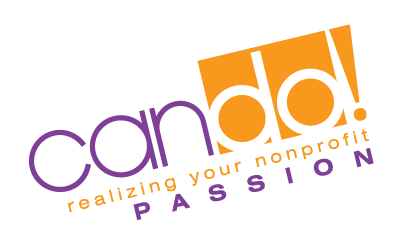
After this initial success, I continued writing grants and found I was responding to grant ideas that came from a variety of sources. I learned of a grant opportunity through a friend or reading a news article. Then I’d read what was needed for the grant and started writing and putting together the pieces of the grant requirements for the foundation. Although sometimes I could cut and paste information, I really was just starting each grant as a new process. It took hours of time for each grant and after a while I began to wonder, “Is there an easier way?”
Here’s a checklist of what nonprofits can do to prepare for and create a template for writing grants that will make grant writing easier for your organization.

The Board of Directors is responsible for ensuring the mission of the organization is always in mind. All their decisions are to support the mission and vision of the organization. Foundations look for organizations whose governing management is sound, follows industry standards and guidelines, and IRS and State laws. Foundations appreciate nonprofit organizations who have a 3-5 year strategic plan they follow and show they can are governing a sustainable organization. Successful Board of Directors have board notebooks with their Articles of Incorporation, Bylaws, Policies, Meeting Minutes, Financial reports, Officer Reports, Committee Reports, Executive Director Reports, Strategic Plan and other documents related to their governing duties. The board should be notified of grants that are written for the organization and those grants should follow the guidance of the board. This will help avoid mission/programmatic creep that occur when seeking grants.- Get Your Staff on Board
Grants can add many duties to an organization and all staff, paid or volunteer, need to know about the grants being written in support of the organization. Staff is often needed to provide data for the grant. Staff time and effort is not only needed to deliver the grant, but also for reporting requirements. 
All nonprofit organizations benefit by showing they need to exist in the community they serve. Why do you need to exist? What do you provide that no one else in the community provides? Who else does similar work and how are you different? What statistics do you have to show why your nonprofit is necessary? How do you meet the needs of your clients in a way that is unique? What is the inspiration of your nonprofit? Why should others care about the work you do? What can you tell others about what is so important about the work you do?
The Needs Statement can be a paragraph or several paragraphs and should always include statistical data to support your assertions. Understand that depending on the grant requirements (for instance, length or space), you may need to cut and paste parts of the Needs Statement for each grantor. Some organizations write a couple of Needs Statements of varied lengths that are easily cut and pasted into a grant. Also, there should be phrases that tug at heartstrings in this statement. Grantors, and the general public, need to care about your organization.- Write Out Your Programs
Complete a one to two paragraph written narrative of each individual program. What is the program? Who does it serve? How many does it serve? What are the goals and objectives of the program? Why is the program necessary? How does the program meet the organization’s mission and vision? When is the program conducted (is it annual, year round, quarterly)? Where is the program conducted? Do you have any data around the program? List one success story of the program that tugs at the heartstrings the most.
Having a separate paragraph on each program makes it easier to cut and paste the information for a specific grant. Usually you are writing grants for a specific program and not many programs. Also, organizations benefit when they can clearly distinguish and explain each program. These benefits range from a consistent communication from the board and staff to the community so they understand who you are and what you do. This helps make fundraising easier. - Write Out Your Evaluation Methods and Data
Evaluating the work you do has become a mantra of foundations giving out money to nonprofits. We’ve seen more and more that grantors want to support organizations that can prove their success. Often I hear nonprofits say, this program is impossible to evaluate. They mention too many factors to really show the true benefit of the program. Foundations have been sharing that they will only fund programs that can prove their success and if a program can’t show successful results, they will fund a program at a nonprofit that can show these results. I’ve worked with many nonprofits on developing ways to creatively and accurately evaluate their programs. Sometimes it takes thinking out of the box a bit, but almost anything can have some kind of data-based evaluation based on what the program is trying to accomplish. I’m an admitted data geek, but I have always felt that being able to prove your assertions that you need to exist is the best way to raise money.
- Keep Your Financial Budget and Actuals Up To Date
In a way this goes without saying as everything comes down to money. I do know that many nonprofits struggle, at least in the early years of a new program, with coming up with a realistic budget, but it is good to at least create the budget and make sure you track the money just for that program. As a matter of fact, I suggest separating your budget and Chart of Accounts by Operations/Administration, Programs and Fundraising and then in programs – separate each program (and in fundraising separate each fundraiser) so you know what each activity costs and the income you need to support that activity. The Board of Directors should really be looking at this as well, to make sure programs and fundraisers are fiscally sound and worth continuing (with other factors of why to keep doing programs and fundraisers).
When an organization has these up to date, it is easier to plug the information into a grant for a certain programs. - Template and Update Regularly
Now, get a notebook, with tabs, and make a hard copy of all these items.Also, include:
a) A spreadsheet of the names, addresses, board titles, phone numbers and emails of the board of directors
b) Include your IRS 501c3 determination letter.
c) A list of everyone you collaborate with (nonprofits, businesses, etc.)
d) A copy of your policies, especially your Anti-Discrimination (see my blog on policies for others you should have)
e) A copy of your bylaws
f) A copy of your staff names, phone numbers, emails and job titles
g) A copy of staff job descriptions
h) Any other supporting documents that may be asked for in grants
This is your Grant Template!
Now, the information is only as good as the most recent changes. Always review the information and update regularly both online and in the hard copy. Creating your Grant Template will help help to make writing the grants much easier in the future. You now have the main parts of your grant at your ready disposal and makes your nonprofit a proactive organization.
I share grant opportunities in my Grant Heartbeat we highlight a grant from the National Geographic Society, which is a perfect example of how this template can be used.



